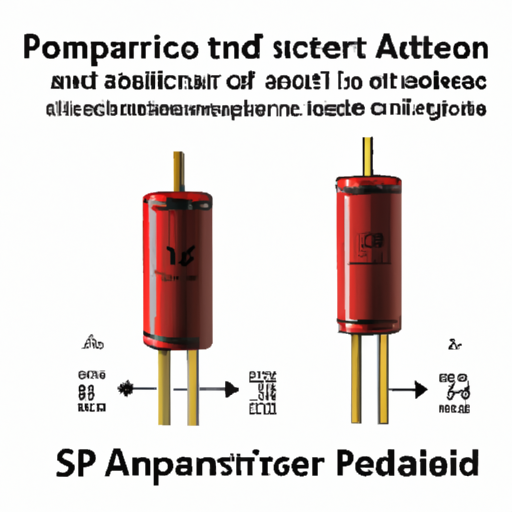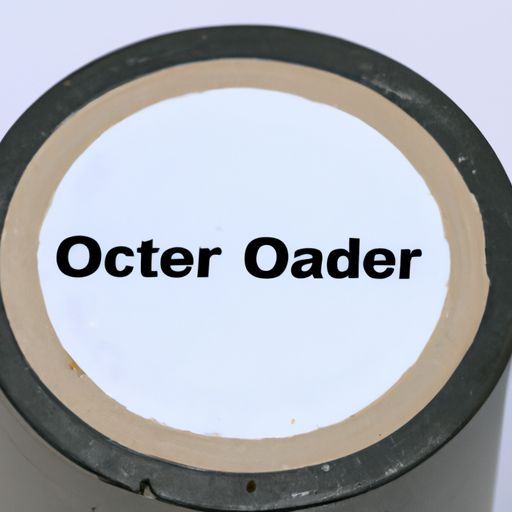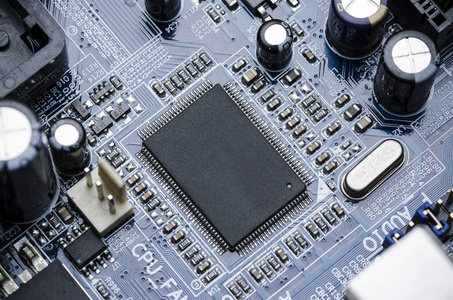What are the product standards for capacitor capacitors?
What are the Product Standards for Capacitors?
I. Introduction
Capacitors are fundamental components in electronic circuits, serving as energy storage devices that can release energy when needed. They play a crucial role in various applications, from power supply smoothing to signal coupling and filtering. Given their widespread use, the importance of product standards in the capacitor industry cannot be overstated. These standards ensure that capacitors are safe, reliable, and compatible with other components in electronic systems. This blog post will explore the product standards for capacitors, detailing their significance, the organizations that establish these standards, and the challenges and future trends in this vital sector.
II. Understanding Capacitors
A. Basic Principles of Capacitors
Capacitors function by storing electrical energy in an electric field, created between two conductive plates separated by an insulating material known as a dielectric. When a voltage is applied across the plates, an electric charge accumulates, allowing the capacitor to store energy. Capacitors are used in various applications, including power supply circuits, audio equipment, and timing devices.
1. Functionality and Applications
Capacitors serve multiple functions in electronic circuits, including:
Energy Storage: They store energy for later use, smoothing out voltage fluctuations in power supplies.
Filtering: Capacitors can filter out unwanted frequencies in audio and radio applications.
Coupling and Decoupling: They can couple signals between different stages of a circuit or decouple power supply noise from sensitive components.
2. Types of Capacitors
There are several types of capacitors, each with unique characteristics and applications:
Ceramic Capacitors: Known for their small size and stability, they are widely used in high-frequency applications.
Electrolytic Capacitors: These capacitors offer high capacitance values and are commonly used in power supply circuits.
Film Capacitors: Known for their reliability and low loss, they are often used in audio and high-frequency applications.
Tantalum Capacitors: These capacitors provide high capacitance in a small package and are used in compact electronic devices.
B. Key Parameters and Specifications
When evaluating capacitors, several key parameters and specifications must be considered:
1. Capacitance
Capacitance, measured in farads (F), indicates the amount of charge a capacitor can store. It is a critical factor in determining a capacitor's suitability for a specific application.
2. Voltage Rating
The voltage rating specifies the maximum voltage a capacitor can handle without risk of failure. Exceeding this rating can lead to catastrophic failure, including leakage or explosion.
3. Tolerance
Tolerance indicates the permissible variation in capacitance from its nominal value. It is essential for ensuring that capacitors perform as expected in a circuit.
4. Temperature Coefficient
The temperature coefficient describes how capacitance changes with temperature. This parameter is crucial for applications where temperature fluctuations are expected.
III. Importance of Product Standards
Product standards play a vital role in the capacitor industry for several reasons:
A. Ensuring Safety and Reliability
Standards help ensure that capacitors are safe to use and reliable in their performance. They establish guidelines for testing and quality assurance, reducing the risk of failures that could lead to accidents or equipment damage.
B. Facilitating International Trade
With the globalization of the electronics market, product standards facilitate international trade by ensuring that capacitors meet consistent quality and safety requirements across different regions.
C. Promoting Technological Advancement
Standards encourage innovation by providing a framework for developing new technologies. They help manufacturers understand the requirements for new products, fostering advancements in capacitor design and functionality.
D. Protecting Consumers and Manufacturers
By adhering to established standards, manufacturers can protect themselves from liability issues, while consumers can have confidence in the products they purchase.
IV. Major Standards Organizations
Several organizations are responsible for establishing product standards for capacitors:
A. International Electrotechnical Commission (IEC)
The IEC is a leading organization in the development of international standards for electrical and electronic devices.
1. Overview of IEC Standards for Capacitors
IEC standards cover various aspects of capacitor design, performance, and testing, ensuring that products are safe and reliable.
2. Key IEC Standards
One of the key standards is **IEC 60384**, which outlines the requirements for fixed capacitors for use in electronic equipment.
B. Institute of Electrical and Electronics Engineers (IEEE)
The IEEE plays a significant role in developing standards for electrical and electronic devices, including capacitors.
1. Role of IEEE in Capacitor Standards
The IEEE develops standards that address the performance and testing of capacitors, ensuring they meet the needs of modern applications.
2. Relevant IEEE Standards
IEEE standards, such as **IEEE 18**, provide guidelines for the testing of capacitors used in power systems.
C. American National Standards Institute (ANSI)
ANSI oversees the development of voluntary consensus standards for products, services, and systems in the United States.
1. ANSI’s Contribution to Capacitor Standards
ANSI collaborates with other organizations to develop standards that ensure the safety and performance of capacitors.
2. Key ANSI Standards
ANSI standards, such as **ANSI C37.90**, address the performance requirements for capacitors used in electrical equipment.
D. Other Relevant Organizations
Other organizations, such as Underwriters Laboratories (UL) and the European Committee for Electrotechnical Standardization (CENELEC), also contribute to the development of capacitor standards, focusing on safety and performance.
V. Key Product Standards for Capacitors
A. General Performance Standards
General performance standards outline the electrical characteristics and environmental conditions that capacitors must meet.
1. Electrical Characteristics
These standards specify the required capacitance, voltage rating, and tolerance for different types of capacitors.
2. Environmental Conditions
Capacitors must be tested under various environmental conditions, including temperature and humidity, to ensure reliable performance.
B. Safety Standards
Safety standards address the potential hazards associated with capacitor use.
1. Fire Safety
Standards ensure that capacitors are designed to minimize fire risks, including guidelines for materials and construction.
2. Electrical Safety
Electrical safety standards focus on preventing electrical shock and ensuring that capacitors can handle specified voltage levels without failure.
C. Quality Assurance Standards
Quality assurance standards establish testing methods and reliability testing protocols to ensure that capacitors meet performance expectations.
1. Testing Methods
These standards outline the procedures for testing capacitors to verify their performance and safety.
2. Reliability Testing
Reliability testing standards assess the long-term performance of capacitors under various conditions.
D. Environmental Standards
Environmental standards address the impact of capacitors on the environment.
1. RoHS Compliance
The Restriction of Hazardous Substances (RoHS) directive limits the use of certain hazardous materials in electronic products, including capacitors.
2. WEEE Directives
The Waste Electrical and Electronic Equipment (WEEE) directive promotes the recycling and proper disposal of electronic waste, including capacitors.
VI. Testing and Certification Processes
A. Overview of Testing Procedures
Testing procedures are essential for ensuring that capacitors meet established standards.
1. Pre-Production Testing
Pre-production testing involves evaluating prototypes to ensure they meet design specifications before mass production.
2. In-Production Testing
In-production testing monitors the quality of capacitors during manufacturing to identify any defects early in the process.
3. Post-Production Testing
Post-production testing verifies that finished capacitors meet performance and safety standards before they are released to the market.
B. Certification Processes
Certification processes involve third-party testing labs that evaluate capacitors against established standards.
1. Role of Third-Party Testing Labs
These labs provide independent verification of a capacitor's compliance with safety and performance standards.
2. Importance of Certification Marks
Certification marks, such as UL and CE, indicate that a capacitor has been tested and meets specific safety and performance criteria.
VII. Challenges in Meeting Product Standards
A. Technological Advancements and Evolving Standards
As technology evolves, so do the standards that govern capacitor design and performance. Manufacturers must stay updated on these changes to remain compliant.
B. Globalization and Varying Standards Across Regions
Globalization has led to varying standards across different regions, making it challenging for manufacturers to ensure compliance in multiple markets.
C. Cost Implications for Manufacturers
Meeting product standards can be costly for manufacturers, particularly for small businesses that may struggle to absorb the expenses associated with testing and certification.
D. Balancing Innovation with Compliance
Manufacturers must balance the need for innovation with the requirement to comply with established standards, which can sometimes stifle creativity.
VIII. Future Trends in Capacitor Standards
A. Impact of Emerging Technologies
Emerging technologies, such as electric vehicles and renewable energy systems, are driving changes in capacitor design and performance standards.
B. Increasing Focus on Sustainability
There is a growing emphasis on sustainability in the capacitor industry, with standards evolving to address environmental concerns and promote eco-friendly practices.
C. Anticipated Changes in Regulatory Frameworks
As technology advances, regulatory frameworks are expected to change, requiring manufacturers to adapt to new standards and compliance requirements.
IX. Conclusion
In conclusion, product standards for capacitors are essential for ensuring safety, reliability, and performance in electronic devices. These standards, established by various organizations, provide a framework for manufacturers to follow, promoting quality and consumer confidence. As the industry continues to evolve, it is crucial for manufacturers and consumers alike to prioritize compliance with these standards to foster innovation while ensuring safety and reliability in electronic applications.
X. References
- IEC 60384: Fixed capacitors for use in electronic equipment.
- IEEE 18: Standard for the testing of capacitors used in power systems.
- ANSI C37.90: Standard for performance requirements for capacitors used in electrical equipment.
- RoHS Directive: Restriction of Hazardous Substances in electrical and electronic equipment.
- WEEE Directive: Waste Electrical and Electronic Equipment directive.
This comprehensive overview of product standards for capacitors highlights their importance in the electronics industry and the ongoing challenges and trends that manufacturers must navigate. By adhering to these standards, the industry can continue to innovate while ensuring the safety and reliability of electronic devices.






